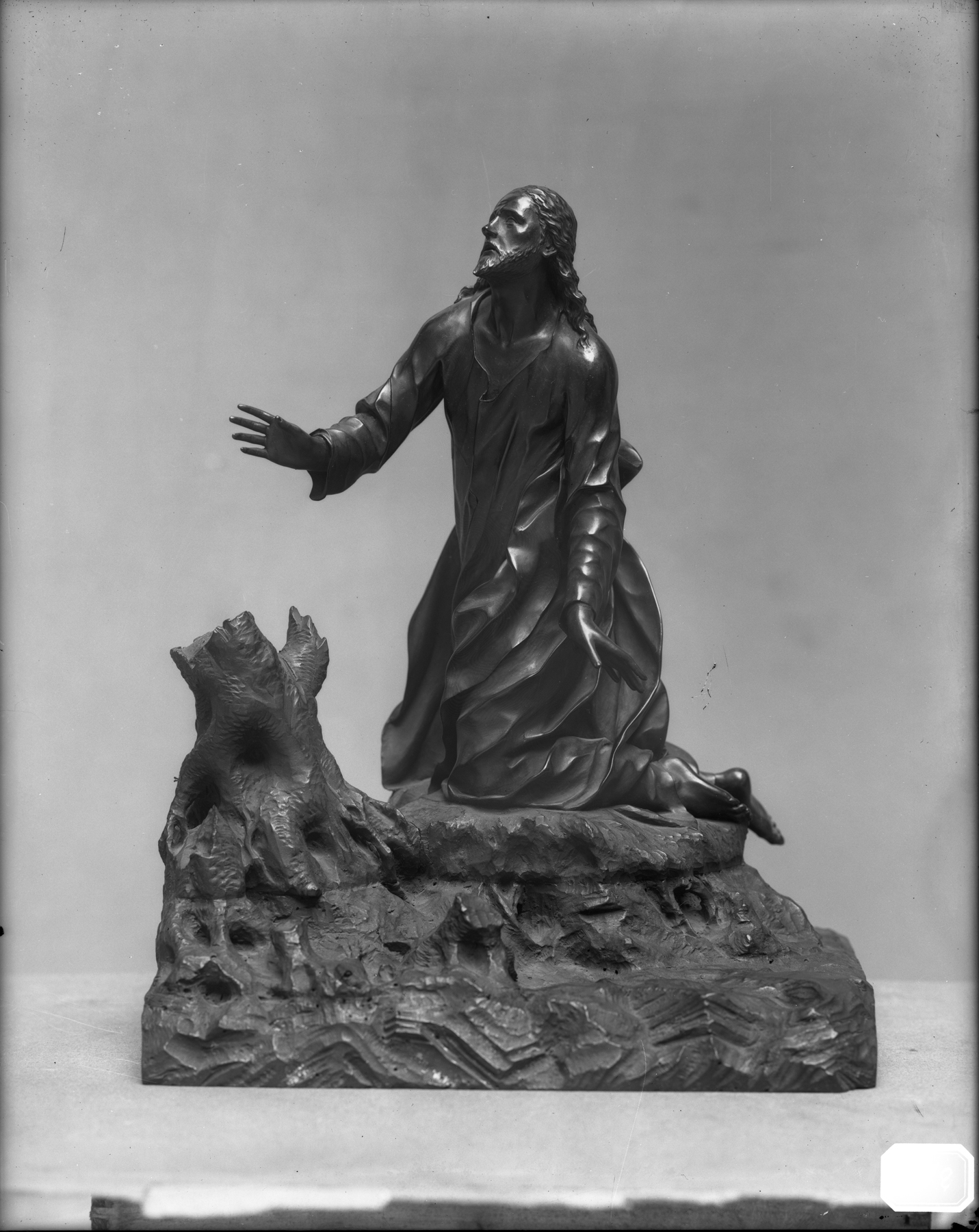Christ in the Garden of Gethsemane
(Baroque Europe )
The episode of Christ's vigil and prayer in the garden of Gethsemane on the Mount of Olives the night before his crucifixion is rarely attempted in freestanding, three-dimensional sculpture, though it was often depicted German and Netherlandish Renaissance painters and printmakers, such as Albrecht Dürer, who could develope the mysteries of an isolated corner of a public garden at night. By eliminating indicators of the garden setting, the artist accepts the challenge of conveying the mood and story solely through body language. Having fallen to his knees, Christ gazes upward at the unseen angels, who offer him a chalice as a symbol of the fate he must accept. That the viewer is expected to complete the vision in his or her own imagination makes the statuette especially effective as an aide to devotion.
Provenance
Provenance (from the French provenir, 'to come from/forth') is the chronology of the ownership, custody, or location of a historical object. Learn more about provenance at the Walters.
Léon Gruel, Paris; Henry Walters, Baltimore, 1914 [mode of acquisition unknown]; Walters Art Museum, 1931, by bequest.
Conservation
| Date | Description | Narrative |
|---|---|---|
| 1/12/1962 | Treatment | cleaned |
| 6/10/1981 | Examination | examined for condition |
| 10/27/1987 | Examination | examined for condition |
| 10/27/1987 | Treatment | cleaned |
Geographies
Germany
(Place of Origin)
Italy (Place of Origin)
Measurements
H: 12 × W: 13 9/16 × D: 8 1/8 in. (30.5 × 34.5 × 20.7 cm)
Credit Line
Acquired by Henry Walters, 1914
Location in Museum
Accession Number
In libraries, galleries, museums, and archives, an accession number is a unique identifier assigned to each object in the collection.
In libraries, galleries, museums, and archives, an accession number is a unique identifier assigned to each object in the collection.
61.34




